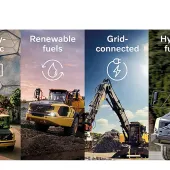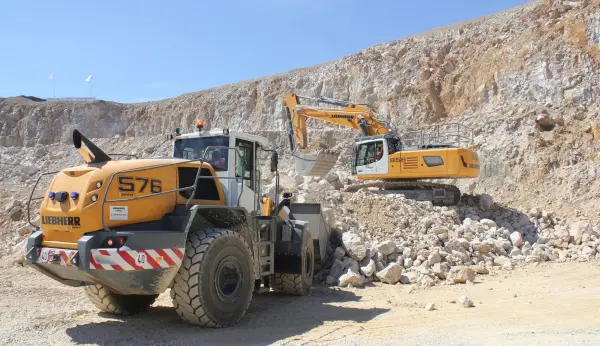Floating solar array first for Glendinning
Glendinning install UK quarrying sector’s first floating solar array at Linhay Hill Quarry
GLENDINNING have taken the next step in their renewable energy journey with the installation of a floating solar array – the first of its kind to be self-designed and fabricated within the UK quarrying sector.
Like many in the industry, Glendinning first explored self-generation through roof-mounted solar. Between 2021 and 2024, the company installed more than 954kWp of panels across its sites, producing more than 2,500MWh of energy to date. Those systems have already returned on their investment.
That success prompted the team to ask: where next? With roofs already filled and ground-mounts ruled out by active tips, attention turned to the water bodies that are a common feature of quarrying. Floating solar is proven in Asia and parts of Europe, but when Glendinning began researching the idea there were no UK examples to visit and no off-the-shelf systems available. If the project was going to happen, it would have to be designed from scratch.
Working closely with Mole Energy, Glendinning’s engineers took the idea from concept through to a fully fabricated system over the course of more than a year. The finished array measures 70m by 55m, weighs over 70 tonnes, and is supported by 3,120 UK-manufactured Aqua Dock double floats carrying 1,269 REX 410 panels. Output is managed through nine Fronius Tauro inverters and an Argand export-limitation system, providing dynamic generation control, full site consumption monitoring, and compliance with G99/G100 regulations.
According to Ian Hannaford, Glendinning’s control systems and project engineer, a number of design choices were critical to the success of the project. From the outset, the system was developed in modular form to simplify fabrication and allow adjustments when larger solar panels became the standard choice. Standard steel sections were used throughout to reduce complexity, and the structure was designed to withstand wind loading over open water. Panels were inset into the floats rather than mounted above them, lowering the centre of gravity and preventing shading between modules. The entire frame was fully galvanized to provide a long service life, while anchoring piles were installed to secure the array and accommodate fluctuations in water level.
Installation also brought its own challenges. To minimize manual handling risks, the team fabricated frames that allowed the modules to be built at waist height, and the array was constructed on land before being floated into position, reducing the risks of working on open water. At the same time, whole-site 11kV metering was installed to ensure accurate export control and integration with the existing quarry network.
Now commissioned, the 535kWp installation is supplying clean electricity directly into quarry operations. By 2026, together with existing rooftop systems, it is expected to provide around 25% of Linhay Hill Quarry’s annual electrical demand, with an estimated return on investment of less than six years. This equates to saving several hundred tonnes of CO2 emissions each year – the equivalent of taking more than 250 cars off the road.
Operations director Mark Glendinning said: ‘This project started as a conversation around the table and grew into a year-long journey of design and fabrication. It’s a great example of how, as an industry, we can innovate within our own environments. For us, floating solar isn’t just about saving money – it’s about showing that quarries can be part of the solution in creating a more sustainable future.’
With total installed solar capacity now approaching 1.5MWp, Glendinning intend to build on this success as part of their long-term sustainability strategy, supporting the Mineral Products Association’s wider Net Zero 2050 Roadmap.










